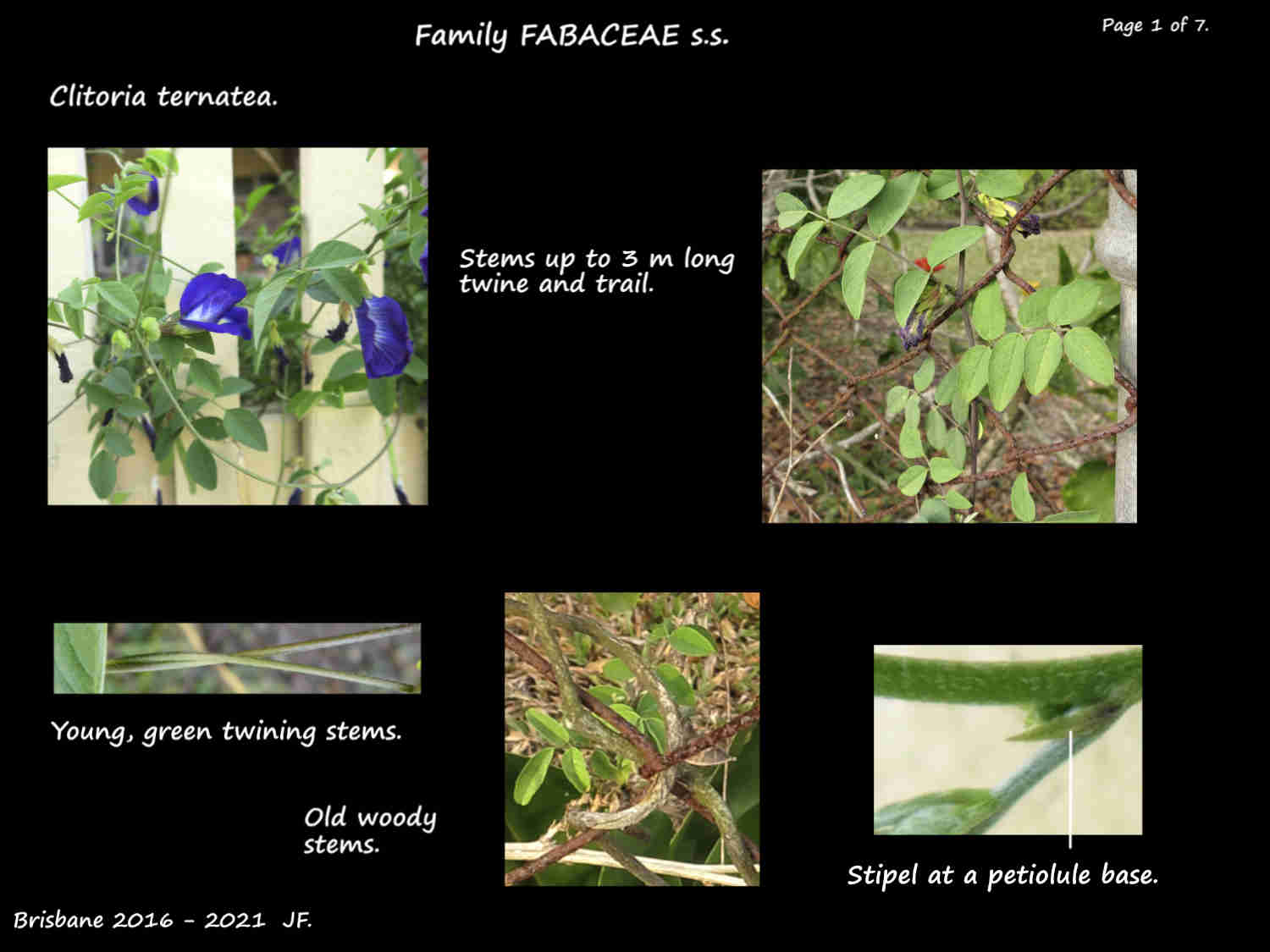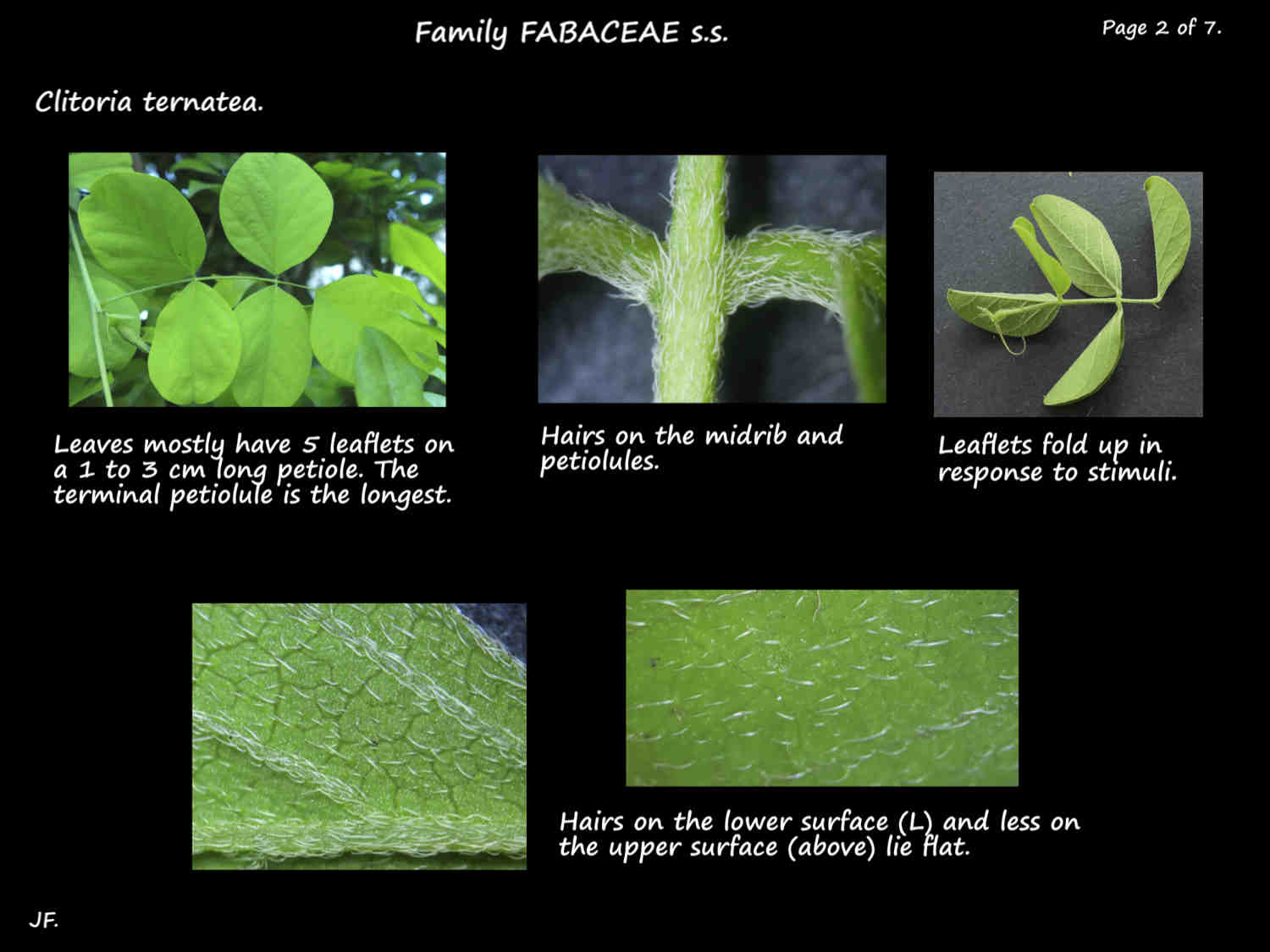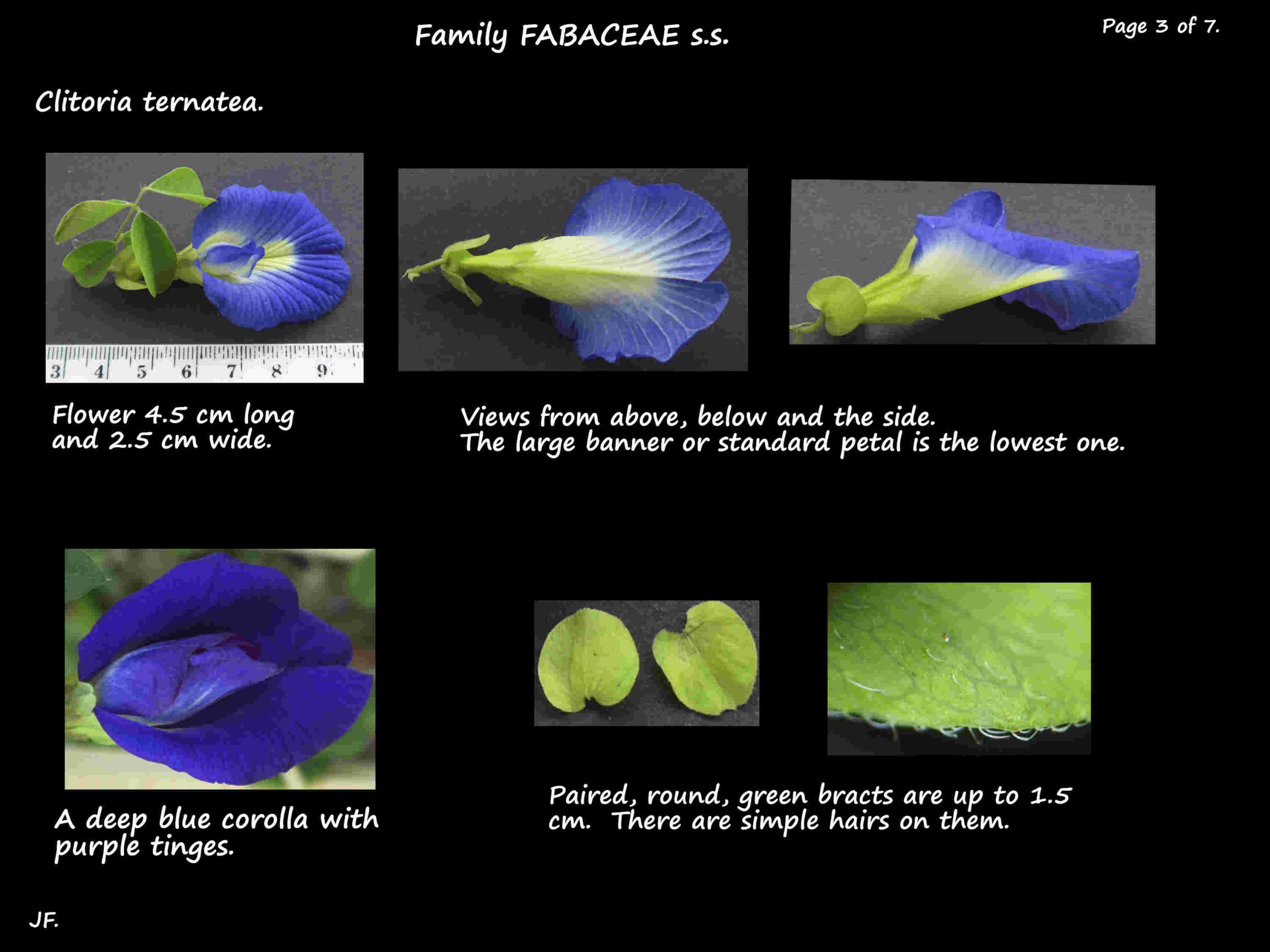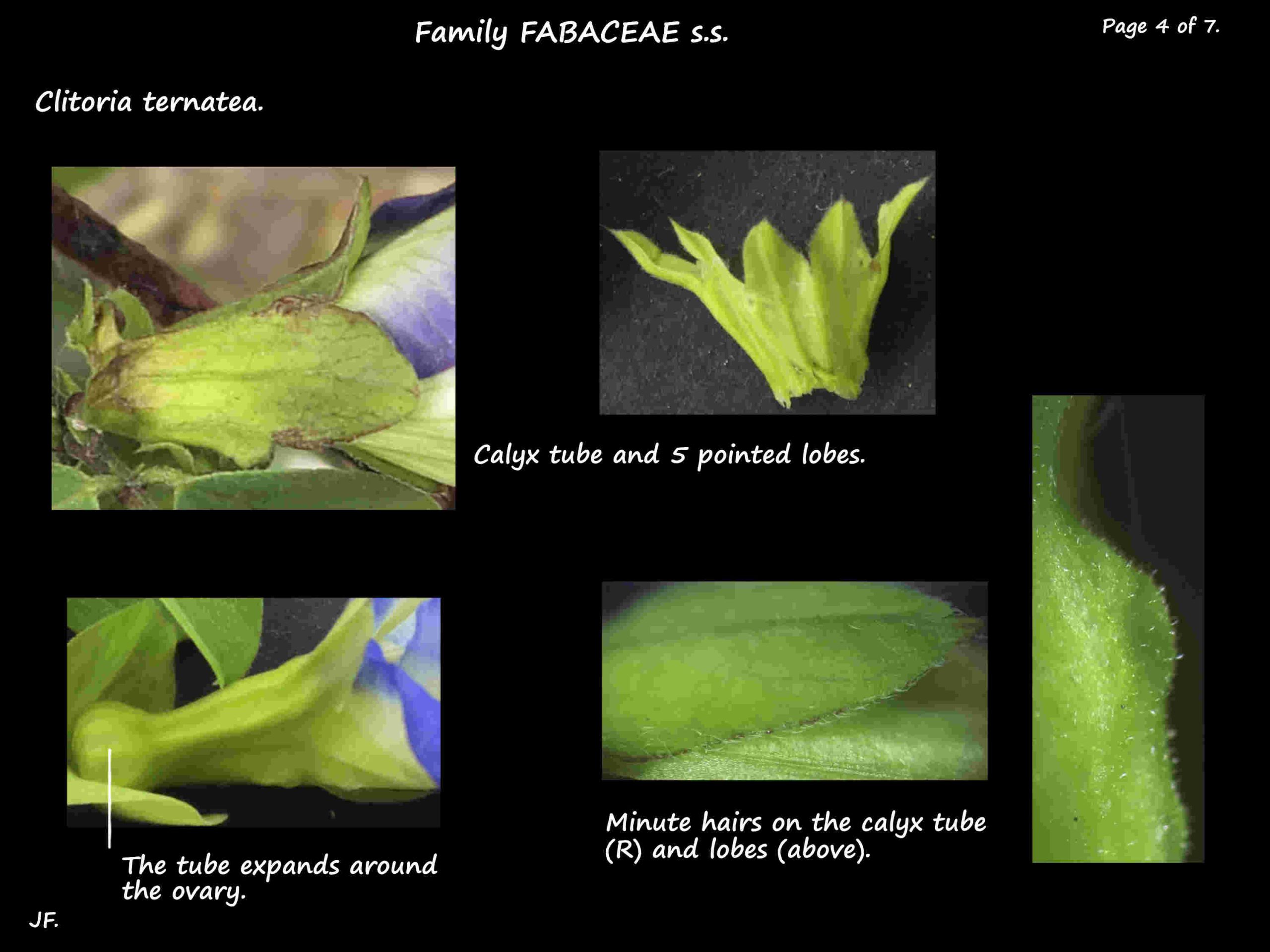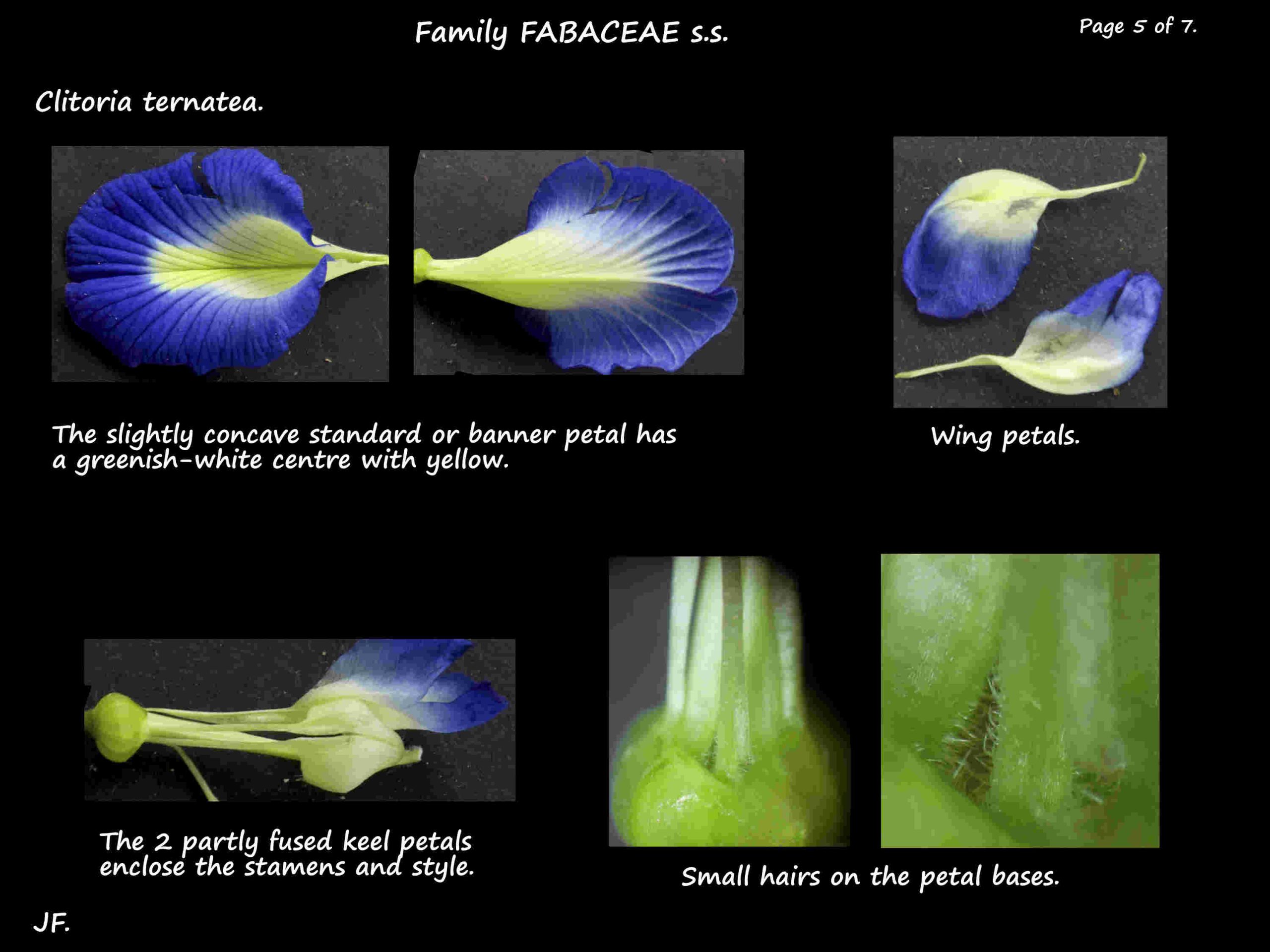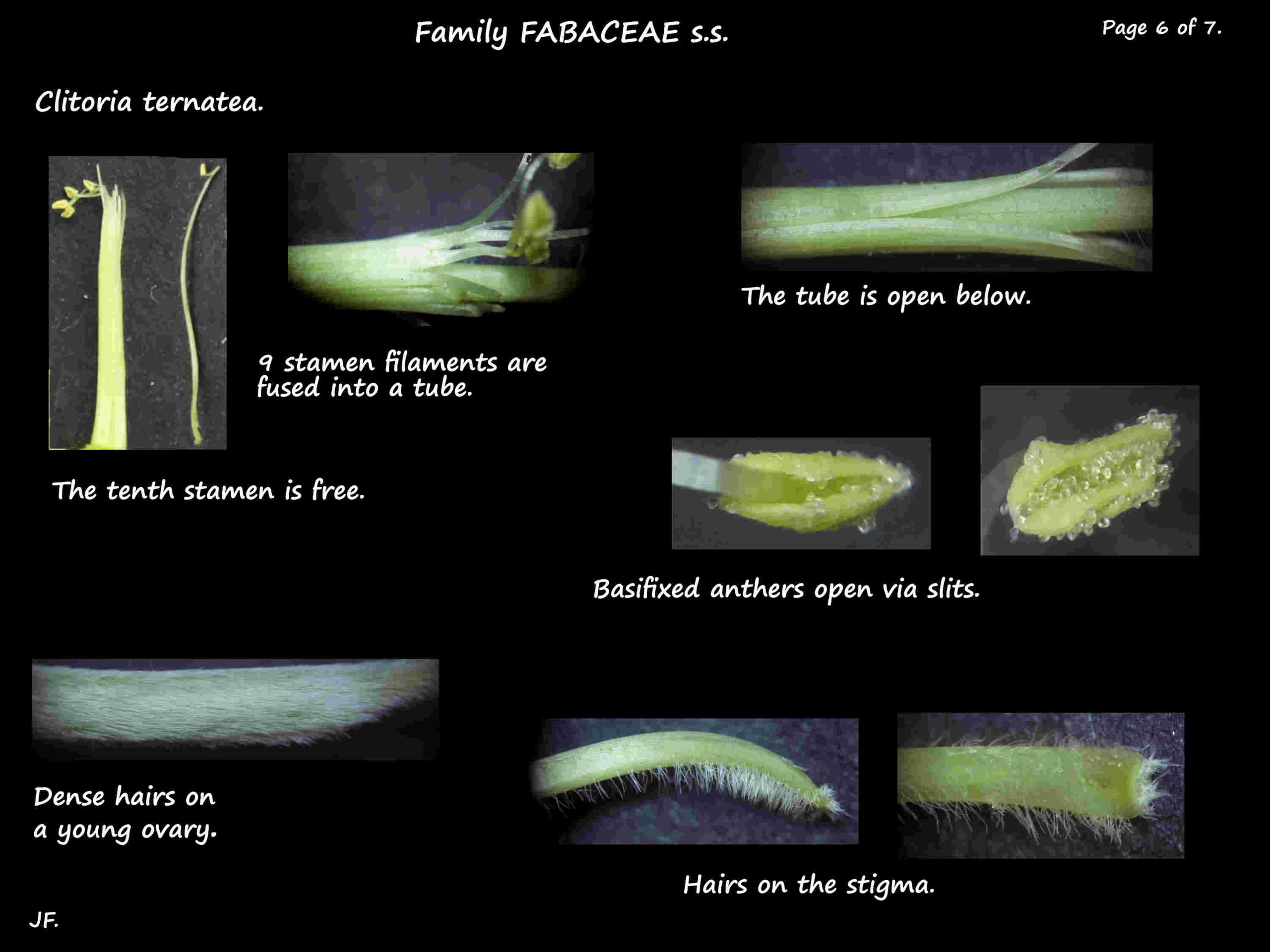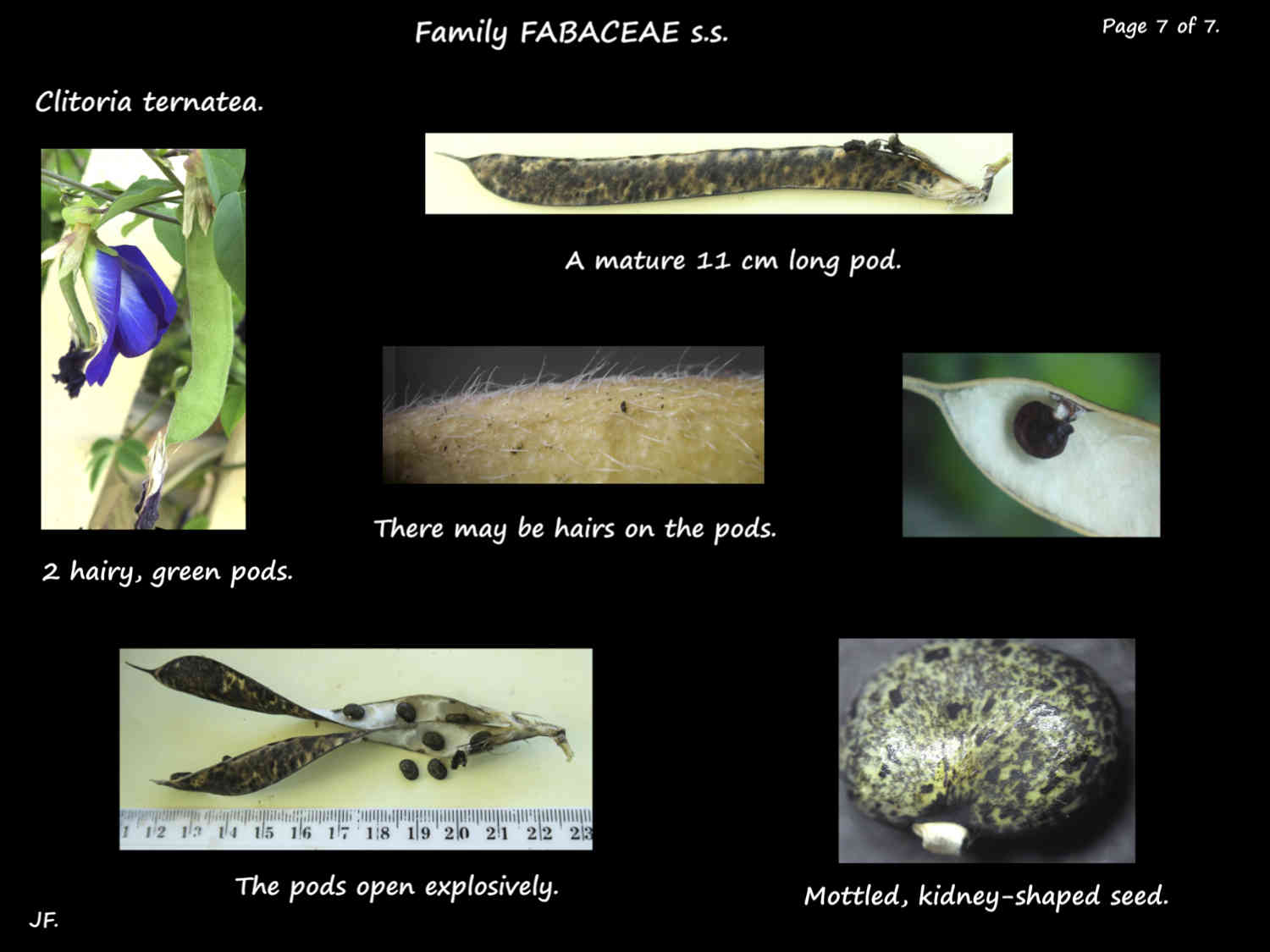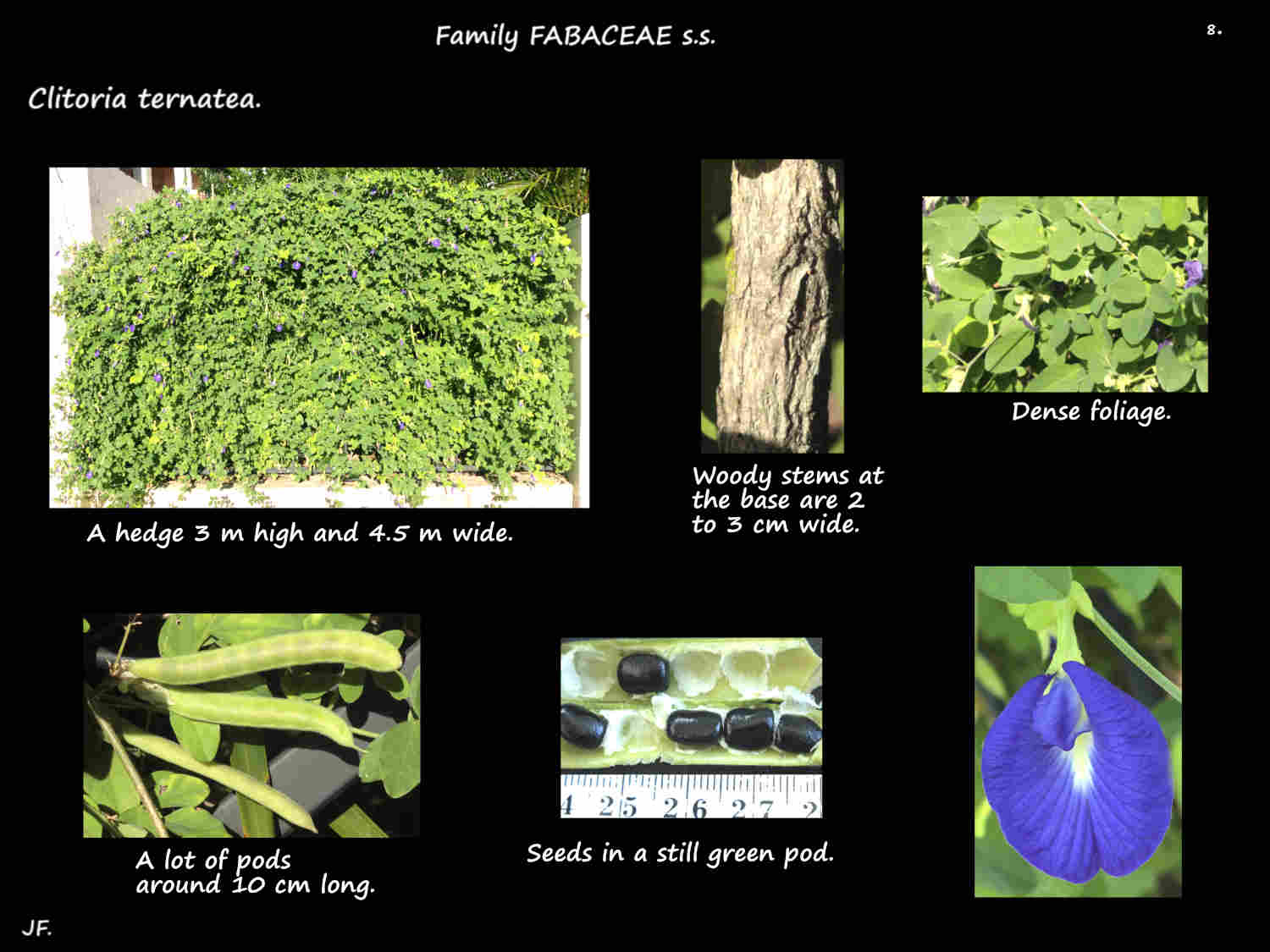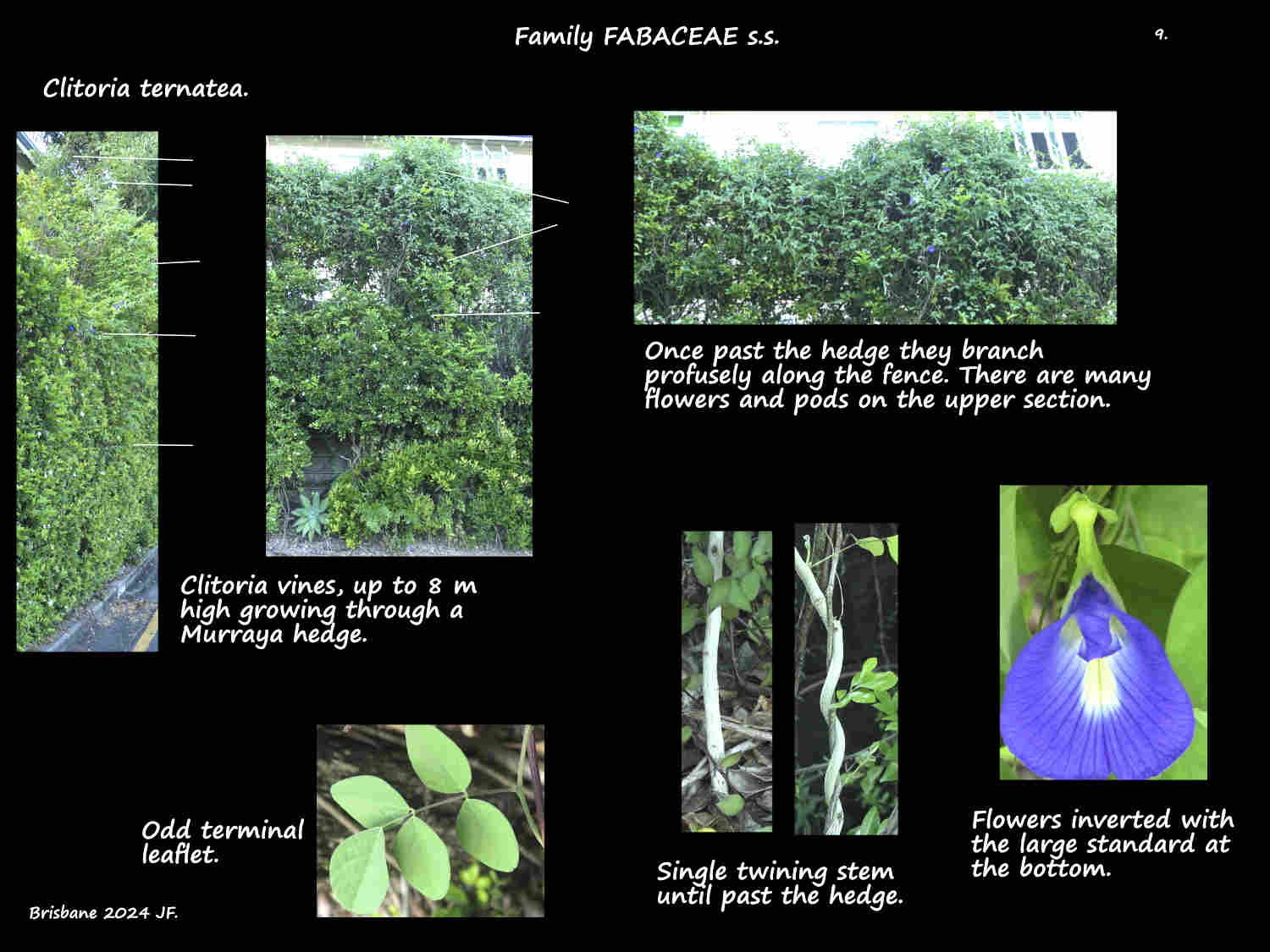Clitoria ternatea.
The Blue or Butterfly pea, in Family Fabaceae, is one of around 35 species.
It is native to many of the warmer areas of the world including Africa and Asia.
It is naturalised in northern Australia and is fairly common as a garden plant.
They are herbs with thin, weak stems that grow by twining or trailing.
The stems, with or without hairs, can be up to 3 m long.
The alternate leaves are on petioles up to 3 cm long.
These have a pulvinus that allows the leaf to move in response to light and touch.
There are stipels (stipule like structures) up to 1 cm long at the base of the petiole.
Leaves, up to 6 cm long, have 5 or 7 elliptic or oblong leaflets.
The lateral leaflets are on petiolules a mm or so long and the terminal one is 3 mm.
The hairs on the lower surface lie flat.
The axillary inflorescences are almost always a solitary flower, rarely two.
There is a pair of round, pale green bracts up to 1.5 cm long.
There are small bracteoles on the flower stalks.
The bisexual flowers are up to 4 cm long and have parts in 5’s.
The sepals are fused into a tube around 1 cm long with 5 triangular lobes up to 1 cm long.
There are very short hairs externally.
The corolla has a pea-like structure with banner, wing and keel petals.
The wide, slightly concave banner or standard petal is the lowest one.
It is up to 5 cm long and 3.5 cm wide.
The ends of the wing petals lie together in the centre of the flower hiding the fused keel petals.
The keel petals surround the stamens and style.
Petals are a deep blue with white and greenish bases.
The banner petal may have a yellowish area down the centre of the white area.
There are minute hairs or cilia on the outer surfaces and edges.
Clitoria ternatea f. albiflora is a white flowered form.
There are 10 stamens with 9 fused into a tube with a slit along the lower side.
The tenth stamen is free.
The basifixed anthers open inwards via longitudinal slits.
The superior ovary, from 1 carpel, has a single locule.
There are numerous ovules with marginal placentation.
The style holds a stigma that has long hairs on one side and shorter ones on the tip.
The flat, oblong fruit pods are up to 12 cm long.
They can be smooth or have a few hairs.
The up to 10 kidney-shaped seeds are pale brown with dark mottling.
J.F.

